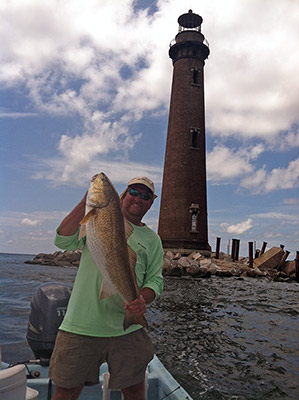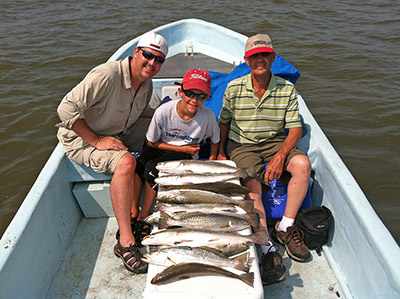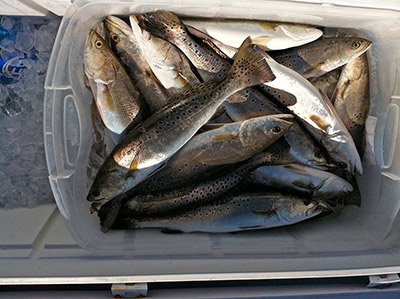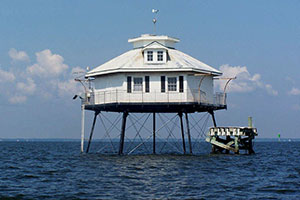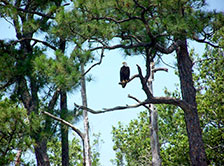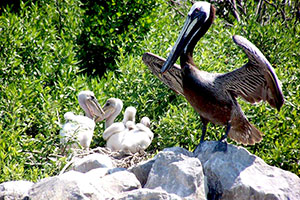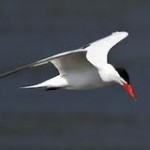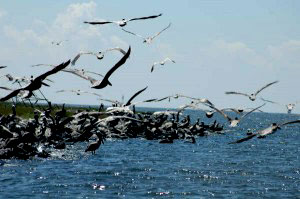Call to book your Special Day today!
Always book in advance for a good experience
Call Pilot or Captain direct @ (251) 970-3598
BOAT TOURS

About us:
The boat will accommodate up to 6 people total. We recommend no more than 4 adults.
Tommy Rachel is a 45 year old licensed boat captain and is a native Baldwin County resident who has been on these waters his entire life and is very knowledgeable in the waterways and it’s inhabitants.
This boat is for cruising only and no skiing or inter-tubing is permitted. Any additional requested time used over the allotted time requires an additional $100.00 per hour billed in quarter hour increments.
All of our tours will give you opportunities to see our abundant wildlife. We regularly see eagles, ospreys, dolphins, otters, pelicans and alligators. Because you are our priority, we can take our time and allow you to get all the pictures you want.
Fishing has been great... Give us a call!
Fishing along the Gulf Coast is a great experience. Whether it is a guys weekend or a family adventure, we can provide the trip for you. We fish in the Gulf as well as inshore so our possibilities are endless. We charge $400 for up to three people and $50 for each additional. Give us a call and we will customize a trip for you.
Boat Tour Pricing: $100 an hour (for up to 4 people)
(maximum 6 people)
2-HR TOUR - (maximum 6 people) Tour Magnolia River, Fish River, Weeks Bay and part of Mobile Bay. You will see some magnificent homes from the water that you would never get to see otherwise. You will also see the mail boxes on everyone’s piers. We are one of the last places in America to receive year-round mail by boat. Magnolia River is one of the most beautiful in the state and is only the 5th in the state to be designated an “Outstanding Alabama Water”, the states highest environmental designation. The town is so proud to have one of our most important natural resources protected. The river is very important to the whole community. We can pick you up at several locations including Big Daddy's or Jesse's. Plan your trip so that you can have lunch before or after your cruise!
(maximum 4 people)
3-HR Gaillard Island TOUR - (maximum 4 people) Leave the Eastern shore (Grand Hotel, Fairhope boat launch) for an incredible trip to Gaillard Island and Middle Bay Lighthouse.
(maximum 5 people)
Tour Magnolia River, Weeks Bay, Mobile Bay, Oyster Bay and the mouth of Bon Secour Bay to see the fisheries and boats that supply the entire gulf coast region with our delicious fresh seafood! And if time allows a quick stop at Tacky Jacks for some libations on the Inter-coastal Waterway.
(maximum 4 people)
4-HR TOUR - (maximum 4 people) Tour Magnolia River, Weeks Bay, Mobile Bay, Oyster Bay and the mouth of Bon Secour Bay to see the fisheries and boats that supply the entire gulf coast region with our delicious fresh seafood! And if time allows a quick stop at Tacky Jacks for some libations on the Intercoastal Waterway.
We will leave Magnolia River and enter Mobile Bay at the mouth of Week's Bay. We will travel up past Mary Ann beach, Mullet Point and Point Clear as we head out to the Island. We will pass some beautiful houses, dolphin pods and you might get lucky and find yourself in a jubilee. As we return, we will make a slight detour to visit Middle Bay Lighthouse.
(maximum 4 people)
8-HR TOUR - (maximum 4 people) This tour can be arranged to see anything your heart's desire including a ride down Magnolia River, Weeks Bay and Mobile Bay down to the intercoastal waterway where many stops at local restaurants and bars can be included. Perhaps you want to go over to Pensacola Bay and hang out in the incredible waters, see the Lighthouse and hang out on one of many private beaches created by the bay. This is an all day excursion and can be whatever you make of it. Your captain will take you wherever you want to go! We can also pick you up in Gulf Shores or Orange Beach.
(Maximum 6 people)
Sunset Cruise 3-HOURS (Maximum 6 people) Includes a run down Magnolia River, Weeks Bay and Fish River up to Big Daddy's (a locals hangout for drinks and/or food) and then watch the sunset on beautiful Mobile Bay, that in your captains words - “it rivals the sunsets on the west coast because of the large expanse of the Mobile Bay”
We can also arrange for pickup at Lulu's or Tacky Jack's in Gulf Shores where you could finish your day with a great dinner or adult beverage.
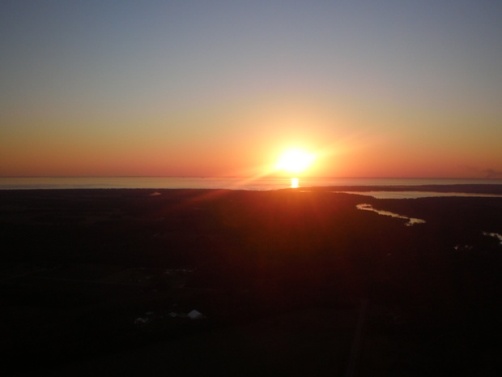
Please call us for any of your special boating needs. We can provide shuttle service, wedding departures and even a night or day out with a designated boat driver.
Gaillard Island
Gaillard Island is a dredge disposal island located in Mobile Bay near Mobile, Alabama. The island is an important site for colonial nesting seabirds and shore birds in coastal Alabama and has been the only nesting site for brown pelicans in Alabama - first discovered in 1983. Today Gaillard Island is an important habitat for thousands of birds representing 15 different species of skimmers, stilts, terns, pelicans, egrets, herons, ducks, and rails. Gaillard Island is also the only Alabama nesting site for caspain terns, sandwich terns, royal terns, and laughing gulls. The first recorded nesting of herring gulls occurred on Gaillard Island in 1986. The Alabama Dept. of Conservation and Natural Resources has closely monitored the colonial nesting shore and seabirds conducting annual surveys since 1998. During the first survey, they estimated that there were 10,000 nests present on the island.
Vegetation is diverse on the island and consists of salt meadow cordgrass, salt marsh bulrush, salt marsh cattail, and American three square that naturally flourished behind the berms. Originally, smooth cordgrass was the only species that was planted.
Sand Island and Middle Bay Lighthouses
Sand Island Lighthouse is a lighthouse located at the southernmost point of the state of Alabama, United States, near Dauphin Island, at the mouth of Mobile Bay, Alabama. It is located roughly three miles offshore from the primary Mobile Bay entrance, bounded on the east by Mobile Point and on the west by Dauphin Island. The lighthouse is 132 feet (40 m) high.
History
An earlier lighthouse on Sand Island was destroyed during the Civil War, on February 23, 1863 by Confederate John W. Glenn.
Sand Island itself faced continuous erosion, to the point where granite blocks were being added to the island to try and stave off the erosion and loss of the lighthouse. Restoration efforts resulted primarily in stabilization of the island through 2008. Sand Island Lighthouse's dire situation is similar to “it's sister light”, the Morris Island Lighthouse, near Charleston, South Carolina. Both lighthouses were situated on sandy islands that have eroded, leaving the towers surrounded by water.
It is on the Lighthouse Digest Doomsday List as one of the most endangered lighthouses in the country. The Sand Island Lighthouse (and Mobile Bay light) were damaged by Hurricane Ivan in 2004 and Hurricane Katrina in 2005. Repairing that damage will further delay restoration efforts.
The image of this lighthouse was used as a stamp cancellation.
Middle Bay Lighthouse
Middle Bay Light, also known as Middle Bay Lighthouse and Mobile Bay Lighthouse, is a hexagonal-shaped screw-pile lighthouse offshore from Mobile, Alabama, in the center of Mobile Bay.
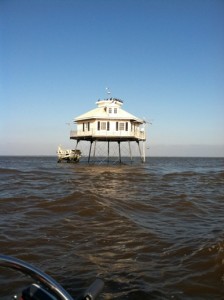 History
History
The station was activated in 1885. In 1916 the keeper's wife gave birth to a baby that summer at the station. According to the Alabama Lighthouse Association web site, the keeper brought a dairy cow to the station and corralled it on a section of the lower deck because his wife was unable to nurse the newborn baby. All had to be evacuated when the station survived but was damaged by a hurricane that year. The light was automated in 1935.
Middle Bay Light was deactivated in 1967. The lighthouse was placed on National Register of Historic Places on December 30, 1974. In 1984 the lighthouse was stabilized by Middle Bay Light Centennial Commission in preparation for the centennial celebration. In 1996 the Coast Guard loaned the original Fresnel lens to the Ft. Morgan Museum for public display. In 2002 restoration efforts were begun to repair the lighthouse.
Three Rivers:
If you are staying in the Fort Morgan area, we will be glad to introduce you to the many inhabitants of the Navy Cove and Three Rivers area. You will have the opportunity to see dolphins, ospreys, eagles, pelicans, seagulls, egrets and many other native animals that can only be seen in secluded locations such as Three Rivers.
Please call for pricing
Weeks Bay:
The Weeks Bay National Estuarine Research Reserve is a small estuary, about 3 sq. miles (8 sq. kilometers), receiving freshwater from the Magnolia and Fish Rivers, and drains a 198-square-mile (510 km2) watershed into the portion of Mobile Bay. This sub–estuary of Mobile Bay averages just 4.8 ft (1.5 meters) deep and is fringed with marsh (Spartina, Juncus) and swamp (pine, oak, magnolia, maple, cypress, bayberry, tupelo and others). The reserve lands also include upland and bottomland hardwood forests, freshwater marsh (Typha, Cladium), submerged aquatic vegetation (Ruppia, Valisneria) and unique bog habitats (Sarracenia, Drosera). Weeks Bay is a critical nursery for shrimp, bay anchovy, blue crab and multitudes of other fish, crustaceans and shellfish that support robust commercial fisheries providing $450 million/year for Alabama.
The Weeks Bay Reserve includes over 6,000 acres of coastal wetlands and waterbottoms that provide rich and diverse habitats for a variety of fish, birds, crustaceans and shellfish, as well as many unique and rare plants. The Weeks Bay estuary, “where rivers meet the sea,” is an important site of scientific research on estuarine ecology.
